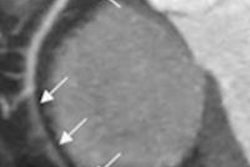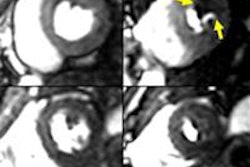Air trapping, a sign of small airway remodeling, is found in several obstructive airway diseases, such as chronic obstructive pulmonary disease (COPD), asthma, cystic fibrosis, and atypical pneumonia. Pulmonary function tests aren't sensitive enough for detecting small airways impairments, and the utility of CT has been confirmed in many studies.
This study compares three CT air-trapping measures for quantification and detection of pathologic air trapping in patients after lung transplantation.
"We found that density mapping as the voxel-to-voxel comparative method of inspiration and expiration CT datasets is the most suited quantitative CT air-trapping method in lung transplant patients," wrote Dr. Hoen-oh Shin from Hannover Medical School in an email to AuntMinnie.com. Density mapping appears to be a good biomarker for air trapping, the group wrote in an abstract.
Other studies have also suggested 3D coregistration of the two datasets for quantifying and identifying small airway remodeling, Shin added.
"We successfully applied the technique for detection and quantification of air trapping in lung transplant patients," he said. The results also showed that density mapping is more accurate than threshold-based solutions.



















